Vaccination is important because immunity wanes over time and reinfections are possible
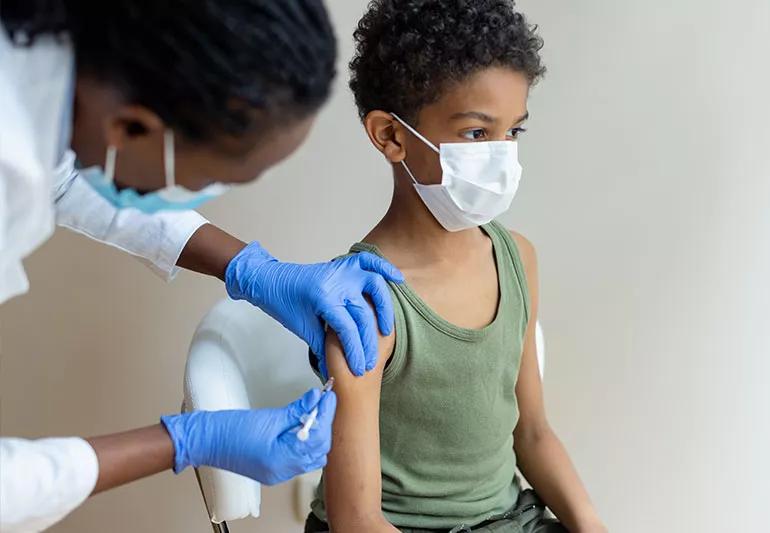
With COVID-19 continuing to circulate, experts recommend that adults who are eligible receive booster doses of the COVID-19 vaccine.
Advertisement
Cleveland Clinic is a non-profit academic medical center. Advertising on our site helps support our mission. We do not endorse non-Cleveland Clinic products or services. Policy
In light of that, you may be wondering if your child should get a booster shot.
Pediatrician Kimberly Giuliano, MD, says yes, they absolutely should.
“People who have received a booster dose have a much higher level of protection than those who have only had two doses of the COVID vaccine,” she explains. “So, for those children who are eligible, I would strongly recommend getting a booster as soon as you can.”
However, with the bivalent COVID-19 booster becoming available to certain age groups, guidance around getting booster doses has changed. As a result, parents might also wonder if their kids are still eligible — and, if so, when they should get boosted.
“This definitely may be confusing to figure out,” Dr. Giuliano says. “So, if you have questions, talk to your child’s pediatrician. They can help point you in the right direction and determine what’s best.”
The COVID-19 booster is currently available and recommended for everyone ages 5 years and up, says Dr. Giuliano.
You’re first eligible to get a COVID-19 booster dose after completing your primary series of vaccines.
For the mRNA vaccines produced by Pfizer and Moderna, a primary series means two shots for kids and teens. (For children between the ages of 6 months and 4 years old, Pfizer defines a primary dose as three shots.)
Advertisement
Although adults can get either a Pfizer or Moderna booster, kids and teens under 18 are only eligible to get a Pfizer booster.
Up until now, the COVID-19 booster being given out was called a monovalent booster. That’s because it only contained mRNA from one COVID-19 strain: the original, earlier one. Some age groups were eligible for one monovalent booster; others were eligible for two monovalent boosters.
In late August 2022, the U.S. Food and Drug Administration (FDA) expanded the emergency use authorizations (EUAs) of the Pfizer and Moderna mRNA COVID-19 vaccines to include a bivalent COVID-19 vaccine booster.
The bivalent booster has two mRNA elements: one with the original strain of the COVID virus and one with the highly contagious BA.4 and BA.5 omicron strains.
Yes, some kids are eligible for the bivalent COVID-19 vaccine booster. Children ages 12 and up can now receive the Pfizer version of this bivalent booster.
This age group is no longer authorized to have the previous monovalent booster. But to make things more complicated, the original monovalent Pfizer booster is the only shot recommended for children between the ages of 5 and 11.
Be aware that the Moderna bivalent booster isn’t recommended for anyone under the age of 18.
All of this can be very confusing, so to recap:
Timing-wise, kids are eligible for the bivalent COVID-19 vaccine booster two months after their last vaccine. This could mean two months after:
This guidance is different from past recommendations, notes Dr. Giuliano. “Before, it varied from person to person on when you could get boosted. They are making guidelines more succinct now. So, even though it might be confusing right now, it’s actually going to get a little bit easier moving forward to figure out what booster you need.”
Kids ages 12 and over who are immunocompromised may have received more COVID-19 boosters than other people.
This group might include kids living with certain health conditions — for example, cancer or immune deficiencies — or kids taking certain medications that might cause them to become immunocompromised.
Advertisement
“Those medications include infusions to treat rheumatological conditions and inflammatory bowel disease, or kids going through chemotherapy,” says Dr. Giuliano.
But kids ages 12 and over who are immunocompromised are also now eligible for a bivalent COVID-19 vaccine booster. And she adds that the timing is also two months after their last vaccine — whether that was a booster dose or the final vaccine of their primary series.
Dr. Giuliano notes that COVID-19 immunity wanes over time, whether that’s immunity from the vaccine or immunity from an infection. “The antibodies from COVID-19 are with us for a period of several months, and then they do start to dissipate,” she says. “If a child goes an extended period of time between their first vaccine series and their booster, they are at risk of contracting illness, as well as at risk for more complications of severe disease.”
Kids under age 12 will eventually be able to get the bivalent COVID-19 booster. However, Dr. Giuliano says parents shouldn’t wait for the bivalent booster to get their kids boosted.
For starters, younger kids are eligible now for the monovalent booster. And these monovalent boosters do provide protection, which is important. You don’t want to wait until a COVID-19 surge happens to get boosted.
Advertisement
“We typically see respiratory viruses peak and then the fall and winter months,” says Dr. Giuliano. “Kids are going back to school and spending more time around larger groups of people and more time indoors. Getting a booster now for protection as we head into the fall is best. Prevention only works if you do it ahead of time.”
While there are side effects that can happen with any of the vaccines, Dr. Giuliano says they are mild and less frequent than complications from a COVID-19 infection itself.
“The side effects pass relatively quickly, generally within 24 hours of the vaccine,” she explains. “Kids also tend to have slightly fewer side effects with their booster dose than what they did with dose number two. That’s because more time has elapsed between dose two and three, as compared to the time elapsed between dose one and two.”
Plus, the COVID-19 vaccine doses kids receive are smaller than the adult COVID-19 vaccine doses. That’s because children’s immune systems are stronger than adult immune systems, says Dr. Giuliano.
“The youngest children who are getting their vaccines right now are able to get an adequate immune response with a much lower dose because their bodies respond better to that,” says Dr. Giuliano.
Advertisement
Dr. Giuliano notes the most common side effects are arm soreness and muscle aches. “These can be treated easily with a little bit of Tylenol® or ibuprofen,” she says. These medications can also be used to treat a low-grade fever, which is a less-common side effect some kids experience.
“The other side effects that we tend to see for children can be fatigue,” Dr. Giuliano adds. “So, it might be a good strategy for kids to have the vaccine at a time where they’re going to be able to rest the next day.”
If your child isn’t yet vaccinated against COVID-19, Dr. Giuliano says that’s a crucial first step.
“We have now given vaccines to billions of people across the world. Millions of people in the United States and children are included in those numbers,” she continues. “We have very robust monitoring systems that have shown us that the current recommended doses for teens and adults are very, very safe.”
Getting a COVID-19 vaccine or booster can safely be done at the same time as other routine childhood vaccines, Dr. Giuliano adds. “If you’re in the pediatrician’s office and have the opportunity to get everything taken care of in one visit, I’d highly recommend doing that,” she says. “The vaccines work just as well and are safe whether you get them in isolation or get them all on the same day.”
Even if you and your child are vaccinated, it’s still important to follow the recommended safety measures to keep safe from getting sick.
“We all need to continue to practice those safety measures that we learned about since the beginning of the pandemic: good handwashing, wearing a mask, limiting exposure to large crowds,” advises Dr. Giuliano. “And most importantly, if you’re sick, stay home so that you’re not spreading diseases to other people, whether that illness is COVID-19 or another respiratory illness.”
Above all, with the continued presence of contagious COVID-19 strains, Dr. Giuliano stresses the importance of getting a booster when you’re eligible. “And the longer we go unprotected, the longer we go unprotected,” she says. “So, protect yourself now.”
Learn more about our editorial process.
Advertisement
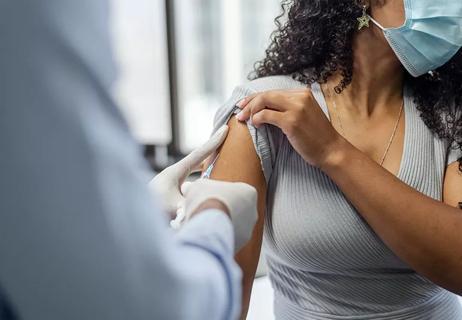
Prevention is best against this serious illness

Vaccination is a good idea before or after treatment
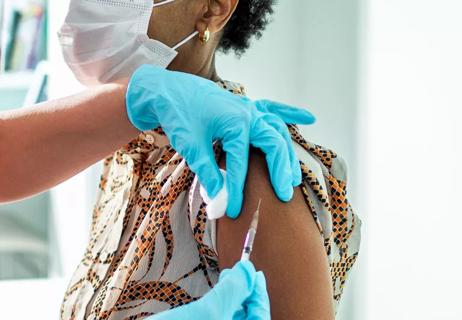
6 excuses for not getting an annual flu shot that just don’t hold up
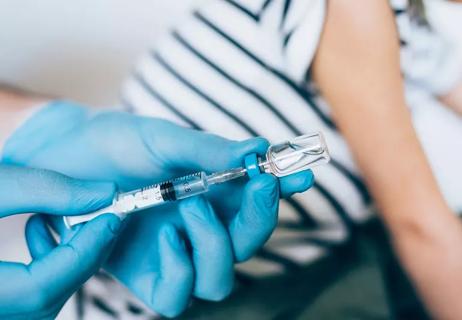
Getting vaccinated prevents the spread of illness

The vaccine is a safe, effective way to prevent influenza — and it won’t give you the virus
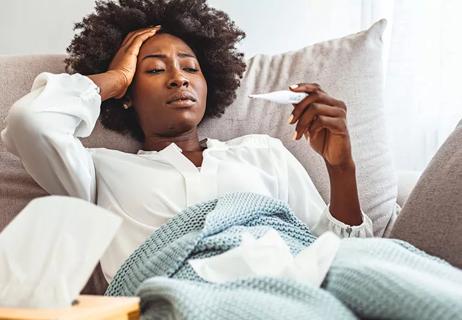
Here's when you should — and shouldn't — postpone your annual flu shot
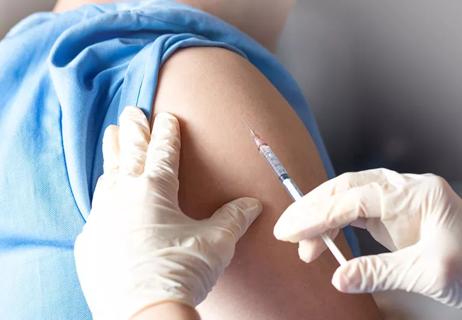
The guidelines have changed — here's what you should know

The short answer: It’s complicated, but the basic care precautions still prevail, like washing your hands and isolating if you’re sick

Type 2 diabetes isn’t inevitable with these dietary changes

Applying a hot or cold compress can help with pain